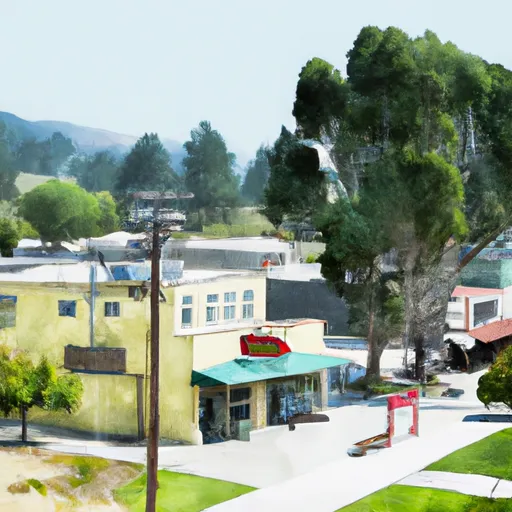-
 Snoflo Premium
Snoflo Premium
Get unlimited access to all our content
With no Ad interruptions! - Start Your Free Trial Login with existing account
Mad-River
Eden Index
Climate
8.9
•
Recreation
3.8
•
Community
•
Safeguard
4.9/10

Mad River is a small community located in Humboldt County, California. It is situated along the scenic Mad River, which flows from the Trinity Alps into the Pacific Ocean. The region experiences a mild Mediterranean climate characterized by warm, dry summers and cool, wet winters. Summers typically see temperatures ranging from the low 60s to mid-70s Fahrenheit, while winters average in the 40s and can bring heavy rainfall.
The hydrology of Mad River is influenced by its proximity to the coast and the surrounding mountains. The river is fed by numerous tributaries, resulting in a diverse ecosystem that supports a variety of aquatic life. The watershed also provides water for agricultural activities in the region.
Outdoor recreation opportunities in Mad River are abundant. The river itself offers opportunities for fishing, kayaking, and rafting, particularly during the peak flow in the winter and spring. The surrounding forests provide ample hiking and camping opportunities, with trails leading to stunning viewpoints and waterfalls. Visitors can also explore nearby state and national parks, such as Redwood National and State Parks, to experience the awe-inspiring ancient redwood forests. Overall, Mad River is a captivating destination for outdoor enthusiasts seeking to immerse themselves in the natural beauty of Northern California.
What is the Eden Index?
The Snoflo Eden Index serves as a comprehensive rating system for regions, evaluating their desirability through a holistic assessment of climate health, outdoor recreation opportunities, and natural disaster risk, acknowledging the profound impact of these factors on livability and well-being.
Climate Health Indicator (CHI): 8.9
Mad-River receives approximately
1587mm of rain per year,
with humidity levels near 61%
and air temperatures averaging around
12°C.
Mad-River has a plant hardyness factor of
8, meaning
plants and agriculture in this region tend to thrive here all year round.
By considering the ideal temperature range, reliable water supplies, clean air, and stable seasonal rain or snowpacks, the Climate Health Indicator (CHI) underscores the significance of a healthy climate as the foundation for quality living.
A healthy climate is paramount for ensuring a high quality of life and livability in a region, fostering both physical well-being and environmental harmony. This can be characterized by ideal temperatures, reliable access to water supplies, clean air, and consistent seasonal rain or snowpacks.
Weather Forecast
Streamflow Conditions
Northern California Coastal
Area Rivers
Northern California Coastal
Snowpack Depths
Northern California Coastal
Reservoir Storage Capacity
Northern California Coastal
Groundwater Levels
Recreational Opportunity Index (ROI): 3.8
The Recreational Opportunity Index (ROI) recognizes the value of outdoor recreational options, such as parks, hiking trails, camping sites, and fishing spots, while acknowledging that climate plays a pivotal role in ensuring the comfort and consistency of these experiences.
Access to outdoor recreational opportunities, encompassing activities such as parks, hiking, camping, and fishing, is crucial for overall well-being, and the climate plays a pivotal role in enabling and enhancing these experiences, ensuring that individuals can engage in nature-based activities comfortably and consistently.
Camping Areas
| Campground | Campsites | Reservations | Toilets | Showers | Elevation |
|---|---|---|---|---|---|
| Forest Glen | 21 | 2,450 ft | |||
| Hell Gate | 29 | 2,341 ft | |||
| Scott Flat | 18 | 2,381 ft | |||
| Fir Cove | 19 | 2,763 ft | |||
| Bailey Canyon | 25 | 2,719 ft | |||
| Big Slide | 15 | 1,224 ft | |||
| Mad River | 40 | 2,559 ft | |||
| Slide Creek | 5 | 1,207 ft | |||
| Big Bar | 35 | 1,229 ft | |||
| Miller Spring | 5 | 4,717 ft |
Nearby Ski Areas
Catastrophe Safeguard Index (CSI):
The Catastrophe Safeguard Index (CSI) recognizes that natural disaster risk, encompassing floods, fires, hurricanes, and tornadoes, can drastically affect safety and the overall appeal of an area.
The level of natural disaster risk in a region significantly affects safety and the overall livability, with climate change amplifying these risks by potentially increasing the frequency and intensity of events like floods, fires, hurricanes, and tornadoes, thereby posing substantial challenges to community resilience and well-being.
Community Resilience Indicator (CRI):
The Community Resilience Indicator (CRI) recognizes that education, healthcare, and socioeconomics are crucial to the well-being of a region. The CRI acknowledges the profound impact of these elements on residents' overall quality of life. By evaluating educational resources, healthcare accessibility, and economic inclusivity, the index captures the essential aspects that contribute to a thriving community, fostering resident satisfaction, equity, and social cohesion.

